A World of STEM in a Dandelion Puff
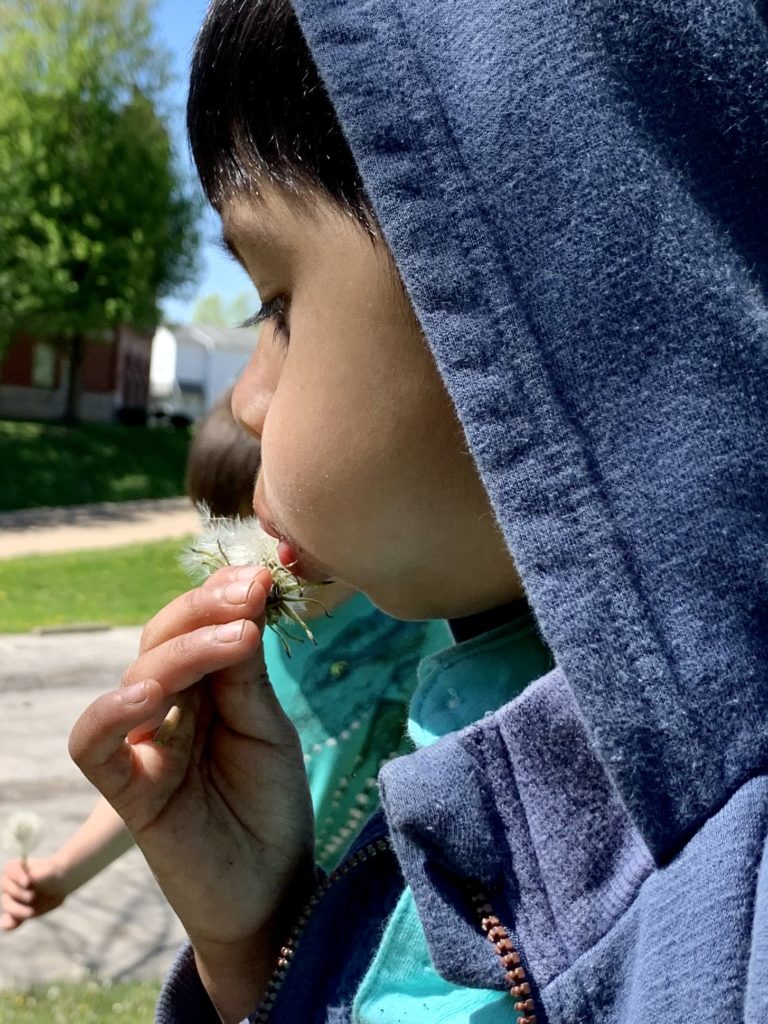
“No, Trey! You have to blow out—like when you blow out the candles on a birthday cake,” Noah counsels. “Don’t suck the seeds in!”
I look over to see Trey, our youngest learner, pulling dandelion seeds off of his lips. There are no giggles from his peers, just many suggestions and a short science lesson about wind and air movement.
Earlier in the week, we were busy picking the yellow dandelions and focusing on the length and size of each flower. Today, we are still comparing attributes and measurements. But, for the moment, the children are intently focused on the wind and the movement of the seeds.

“Watch me!” instructs another child. “You push the air out! You can’t see the air but you can feel it on your hand and it blows the puff seeds away from you.”
“It’s like blowing bubbles,” he adds. “When I blow slowly, I get big bubbles, but when I blow slow on this dandelion, it barely moves. So blow hard, Trey!”
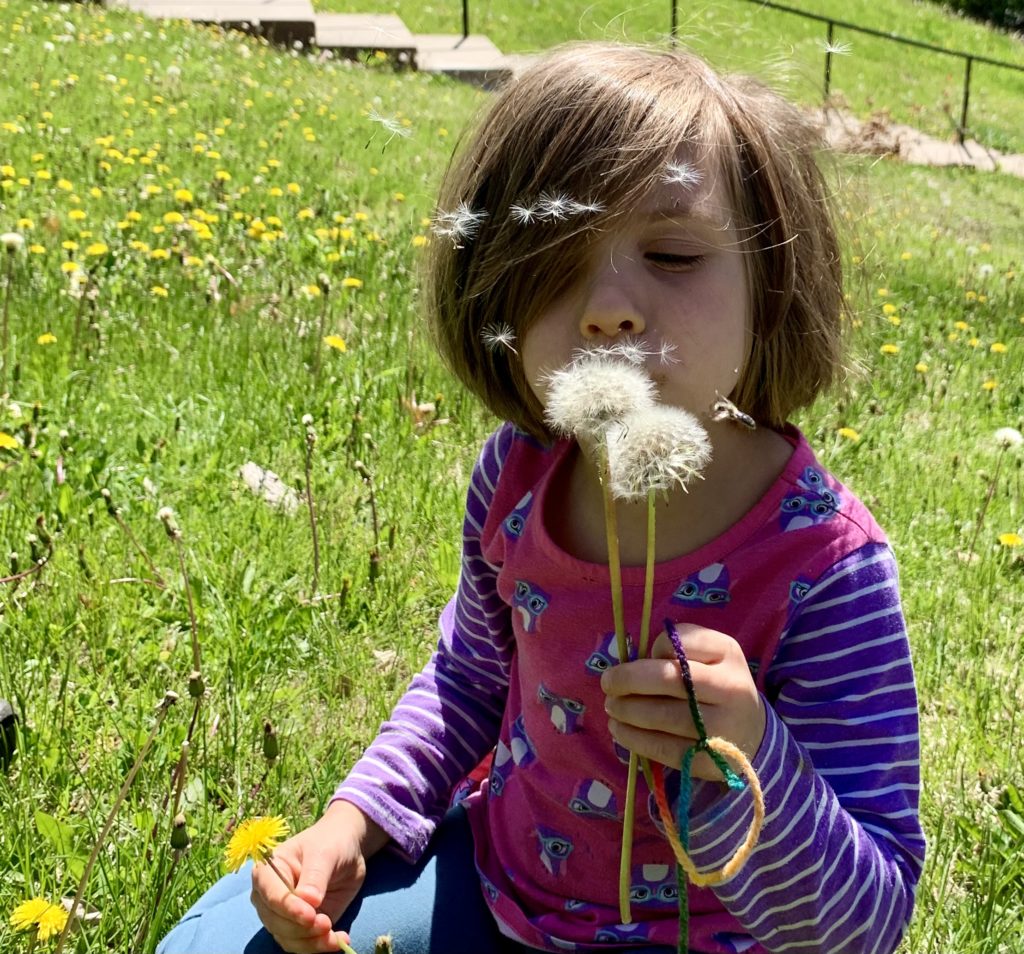
“Pretend you are the wind and you push the seeds off of the stem,” Noah advises. “When you blow air, it becomes wind, and wind can push things. It’s easier to blow when you hold the dandelion closer.”
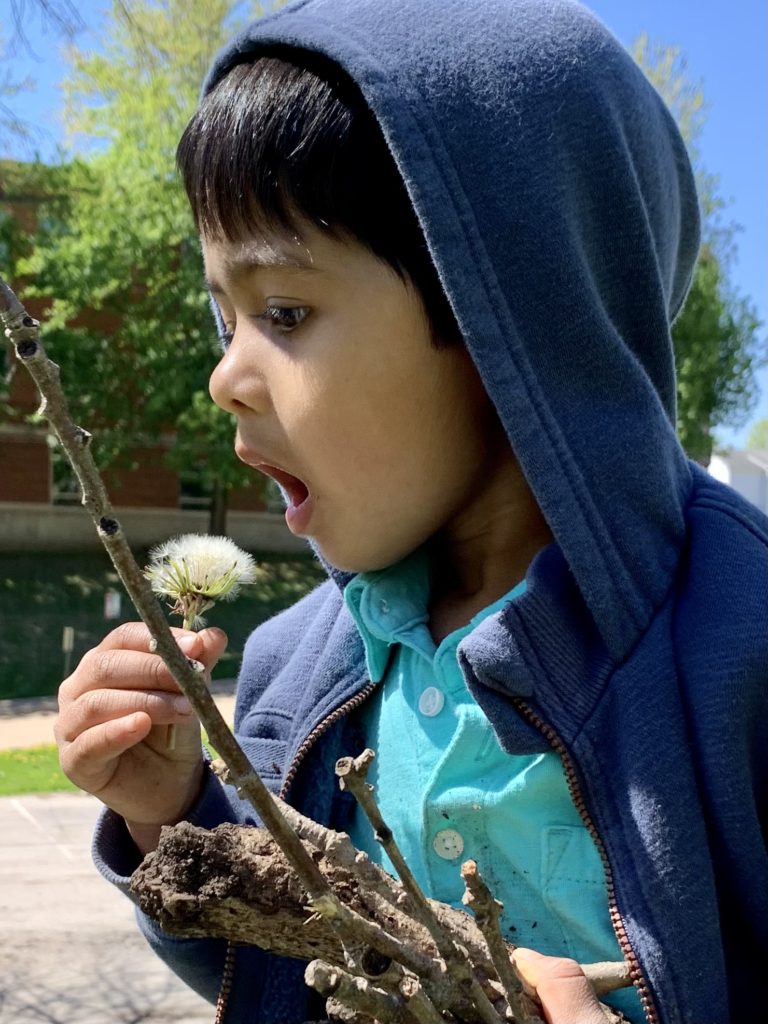
I watch as Trey concentrates on blowing air out rather than sucking air in. Most of us remember blowing on dandelion “puffs” as children and watching in delight and wonder as the seeds scattered in the air. But that simple moment of innocent joy is so much more than child’s play. Speech pathologists use dandelion blowing as an exercise to strengthen the small muscles around the mouth, which are utilized for speaking. Therapists also use the activity to help young children self-regulate and refocus.
But, at least for now, Trey is focused on only one thing: how to blow the dandelion seeds into the air. After observing his peers, he has changed his approach and solved his problem. This is science in action as he observes, collects data and solves problems by making changes to his original design. The seeds of understanding flow through Trey’s brain as the seeds of his dandelion disperse in the wind. This is what STEM learning looks like in an early childhood classroom!
Children who engage in active investigations to learn about their environment are engaging in the real work of scientists: asking questions, investigating and testing their ideas to arrive at conclusions. Children begin to establish new ways of “scientific thinking” by talking about their discoveries with friends and caring adults.
Preschool children have an innate drive to explore and make sense of their world. Nature can set the stage for these early learners to become curious and confident young scientists. You can pave the way for scientific exploration by providing opportunities for young children to engage in scientific practices “in the field,” where learning comes naturally.
We talk a lot about meeting the Illinois Early Learning Standards, and our day in the dandelion field is a perfect example of how time in nature helps us meet those standards.
Consider the following Illinois Early Learning Standards and see for yourself:
Goal 11: Demonstrate curiosity about the world and begin to use the practices of science and engineering to answer questions and solve problems
Goal 12: Explore concepts and information about the physical, earth and life sciences
Goal 13: Understand important connections and understandings in science and engineering
Studies show that children develop a deeper understanding of science and math concepts when they have multiple, repeated and varied opportunities to interact with materials, apply what they have learned and discover these moments on their own.
Science is more than an activity; it’s a way of thinking. Preschoolers naturally engage in conversations and investigations when we give them the time and freedom to collaborate on their own.
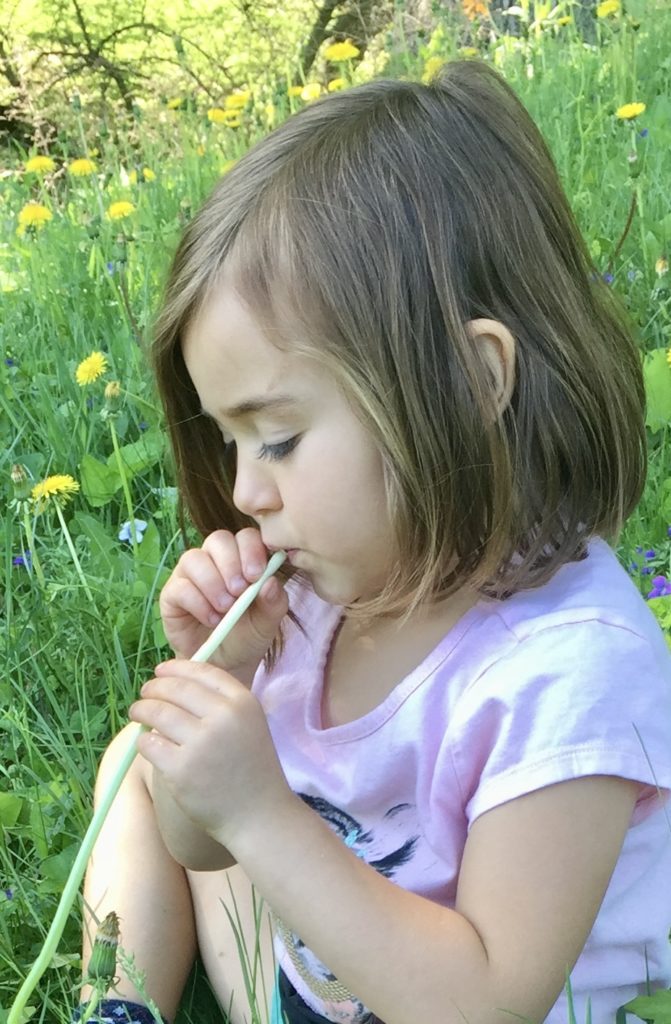
Today, I watch as my group of budding scientists observes and experiments, making predictions and sharing discoveries.
“Hey, look I made a straw!” Ava calls from the other side of the hill, where she has been investigating quietly on her own. She has removed the flower head and discovered that the stem is not only long, but hollow. “I can blow through it, but don’t suck in…there’s stuff in there!” she notes.
“What kind of stuff?” asks Jaime.
“I don’t know, but it’s white and drippy and it tastes DISGUSTING!”
We have temporarily moved on from blowing on dandelion seed puffs to blowing liquid out of the dandelion stems. Air and wind aren’t visible, but their effects are. Investigative play that involves wind or air is just science in disguise!
With the gift of time and friendship, our day in “Mother Nature’s outdoor laboratory” is the only science curriculum we need!
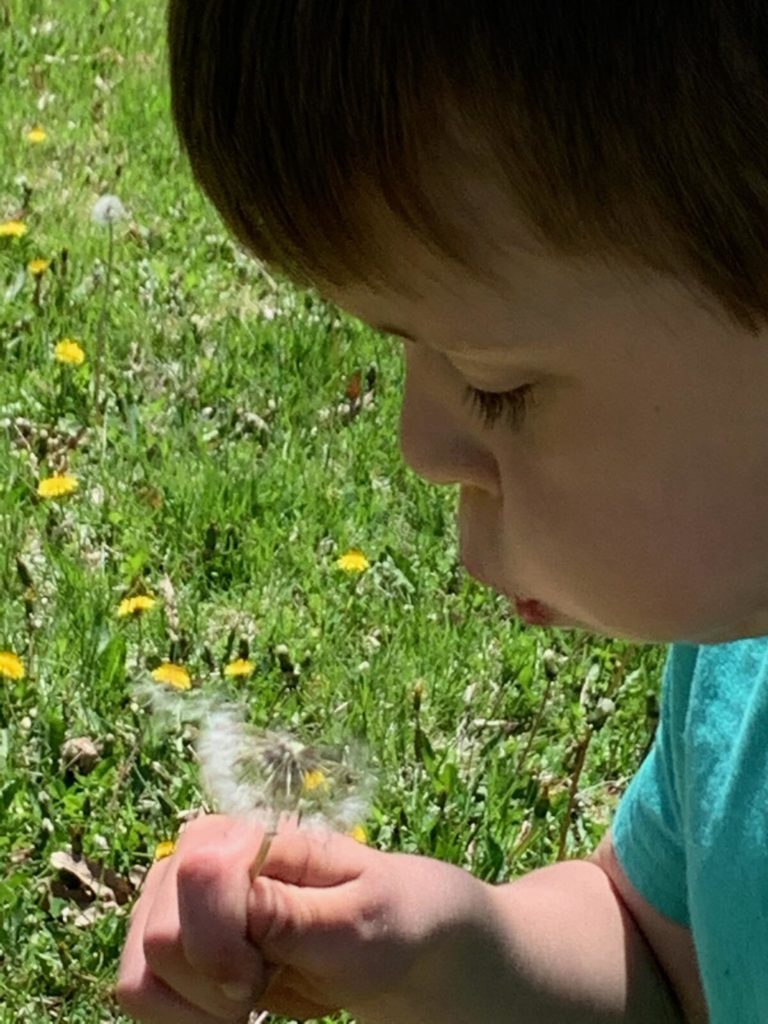
Looking for more STEM adventures? Try out our Dandelions in the Wind lesson plan!
This seems like a fantastic experiment. The children can observe what other children are doing and make there own conclusions or try something different.
This would be a good activity to measure growth and change of you first started monitoring the dandelions when they first appear. Have the kids journal each day the changes they see. Discussions can be had about how the dandelion grew and changed over a short period of time.
Find other things u can blow in the room
In addition to the activity itself, this offers wonderful possibilities for exploring growth and change in the life of a dandelion.
This activity can be introduced in the lesson earth, water and air…that the dandelion needs all of these things in their2 environment in order to grow on a healthy planet.
This is definitely something my young students would be interested in. I could also use this as a lesson in how the dandelion grows and changes into what they see before them.
This is a good experiment to do with children when learning about wind and wind intensity. the children can experiment with blowing harder and softer on the dandelion as well as blowing closer and father away from the dandelion to see what happens in each case.